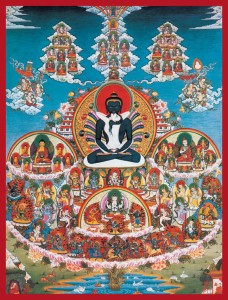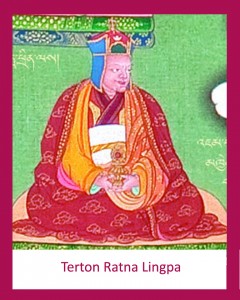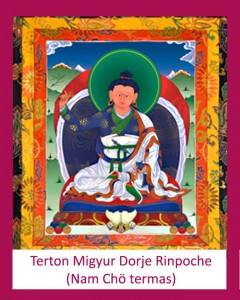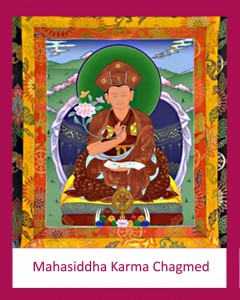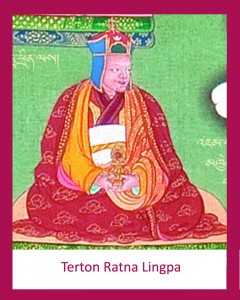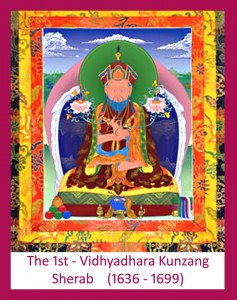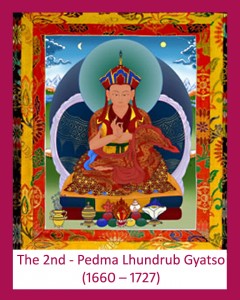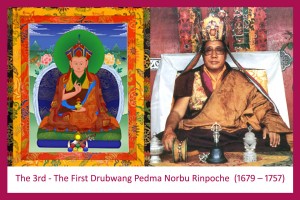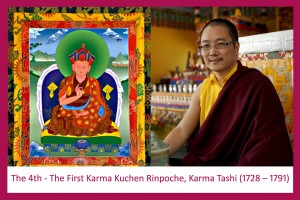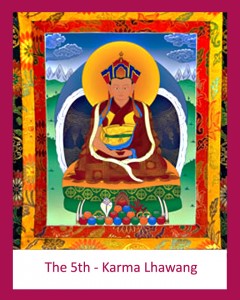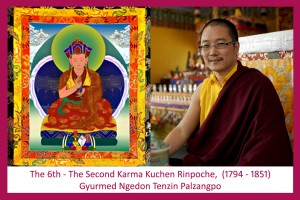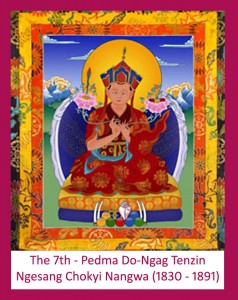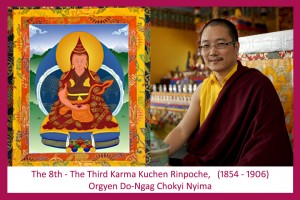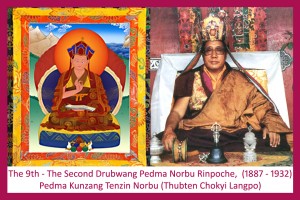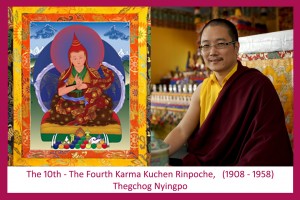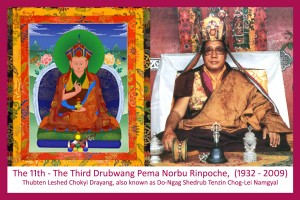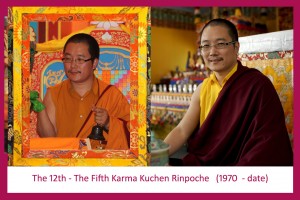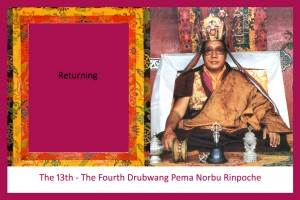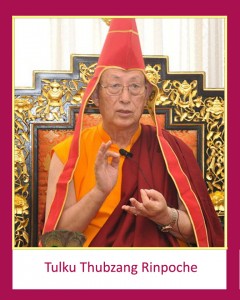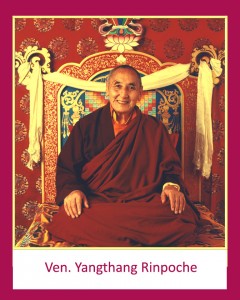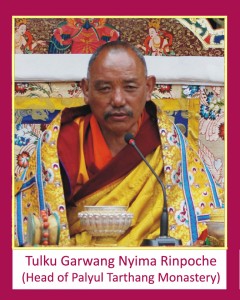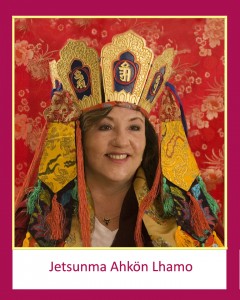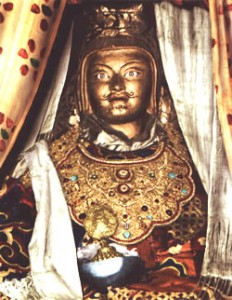
The following is a brief synopsis of the Nyingma lineage and some key terms:
“Nyingma” means “Ancient Ones” and is sometimes referred to as the Ancient Translation School. It is the oldest of the four remaining Buddhist lineages in Tibet, the others being Kagyu, Sakya and Gelugpa. There are different lineages because of different historical transmissions of the Dharma from India to Tibet. The Nyingma transmissions of the 8th and 9th c. came primarily through Padmasambhava (Guru Rinpoche), Vimalamitra, and Shantarakshita (Khenpo Bodhisattva). Two characteristics distinguish the Nyingma from the other lineages: dividing the path into nine vehicles (the highest vehicle, Dzogchen, or the Great Perfection, is also unique to Nyingma), and the revelatory teachings of terma.
Terms to Know
Hinayana: The “lesser vehicle” compromising the overt teachings of Shakyamuni Buddha on ethics, concentration and meditation which produce the result of an Arhat or “enemy destroyer” (one who has overcome the enemies of hatred, greed, and ignorance)
Mahayana: The “greater vehicle,” or path of the bodhisattvas. This path comprises teachings both given by Shakyamuni Buddha both overtly and in more secret ways, which were later revealed by Nagarjuna and Asaga. Motivated by the compassionate intention to lead all sentient beings out of samsara, the bodhisattva follows a more profound set of ethics, concentration, and meditation according to the teachings on the six perfections: generosity, ethics, patience, perseverance, concentration, and meditation. This path leads ultimately to liberation as a fully enlightened Buddha.
Vajrayana: The “indestructible vehicle.” Sometimes called the path of secret mantra or the tantrayana. This is a path of meditation and yogic techniques designed to radically accelerate the time it takes to purify the mind of obscurations and karmic defilements. Those who accomplish this path are called siddhas – it also leads swiftly to the state of Buddhahood.
Tantra: Essentially the same as Vajrayana, but listed separately to remove some confusion. In the Western spiritual marketplace, tantra is sold as a method for achieving spiritual bliss through sexual union. Though such teachings exist in the anuyoga canon of the Nyingma, they are very rarely practiced, and require a yogi and yogini who have completely transcended ordinary desire, received the permission and proper transmissions from a qualified lama, and are for the purpose of subtle purification, not ordinary blissful feelings. Anything else is a corruption, and spiritually pointless.
The word tantra means “continuity” and refers to the continuous uninterrupted perfection inherent in all phenomena. It therefore refers to those teachings that take such a view as the basis for practice. Tantra is also used as a word for the actual text in which such teachings are written.
Kama: The orally transmitted teachings of sutra and tantra translated at the time of Padmasambhava and Vimalamitra.
Terma: Literally means “treasure.” It refers to the teachings and sacred objects hidden by Guru Rinpoche and his consort Yeshe Tsogyal to be discovered at the appropriate time for their beneficial use. They include both physical and non-physical treasures (“sa-ter,” or earth treasures, and “gong-ter,” or mind treasures).
Terton: Means “treasure revealer,” or one who discovers terma. All tertons are the prophesied incarnations of one of Guru Rinpoche’s 25 heart disciples. Tertons have been revealing terma from the 10th c. to the present day.
Mahayoga: The “generation stage” of practice. This is the first level of inner tantra corresponding to the seventh of the nine Nyingma vehicles.
Anuyoga: The “completion stage” of practice. This is the second level of inner tantra, corresponding to the eighth of the nine Nyingma vehicles.
Atiyoga: The “great perfection stage” of practice, also known as Dzogchen (a contraction of dzogpa chenpo). This is the ninth of the nine Nyingma vehicles, which itself has three divisions. The third is called “mengagde,” or esoteric instructions. This is divided into two practice methods: trekchod and togyal.
Important Names
Padmasambhava: This means “the lotus-born.” He is also known as Guru Rinpoche. He was the emanation of Shakyamuni Buddha appearing for the purpose of propagating the Vajrayana teachings. Dwelling in India for 1,000 years, he went to Tibet at the invitation of King Trisong Deutsen, tamed all the negative non-physical forces, established the first monastery (Samye Ling), extensively taught a select few disciples, and left hidden spiritual teachings and objects (terma) for the benefit of future generations.
Trisong Deutsen: King of Tibet in the 8th and 9th c. who had unified the country. Wishing to establish the Dharma in Tibet, he invited many great masters from India, chief among them being Padmasambhava, Vimalamitra, and Shantarakshita. He sponsored the translation of the entire Buddhist canon from Sanskrit to Tibetan, thus ensuring its safety.
Vimalamitra: Invited by Trisong Deutsen specifically to bring the inner tantra teachings, in particular Dzogchen. This body of teachings is known as the Vima Nyingthig, or “heart essence of Vimalamitra.”
Shantarakshita: Abbot of Nalanda, the greatest Buddhist University in India, invited by King Trisong Deutsen to establish Tibet’s first monastery. When he could not accomplish this, he was the one who recommended inviting Padmashambhava. He established the hinayana and Mahayana teachings, giving profound guidance to the first Tibetan monks, as well as the general lay population.
Yeshe Tsogyal: Daughter of Trisong Deutsen, a wisdom Dakini who was given to Padmasambhava by the king. She became Padmasambhava’s chief consort and closest disciple. Having perfect recall, she recorded all his teachings and helped conceal them as terma for future generations.
For more information about Buddhism, visit tara.org.
Recommended Reading:
- The Nyingma School of Tibetan Buddhism, His Holiness Dudjom Rinpoche
- Lineage of Diamond Light, Crystal Mirror 5, Dharma Publishing
- Masters of the Nyingma Lineage, Crystal Mirror 11, Dharma Publishing
- The Lotus-Born, Yeshe Tsogyal
- Guru Rinpoche: His Life and Times, Ngawang Zangpo
- Masters of Meditation and Miracles, Tulku Thondup
- Crazy Wisdom, Chogyam Trungpa
- Sky Dancer, Keith Dowman
- Buddhist Masters of Enchantment, Keith Dowman
- Dakini Teachings, Yeshe Tsogyal
- Advice from the Lotus Born, Padmasambhava
- The Lives and Liberation of Princess Mandarava, Sangye Khandro
![Nyingma_Seal[1]](https://www.tibetanbuddhistaltar.org/wp-content/uploads/2010/08/Nyingma_Seal1.gif)
